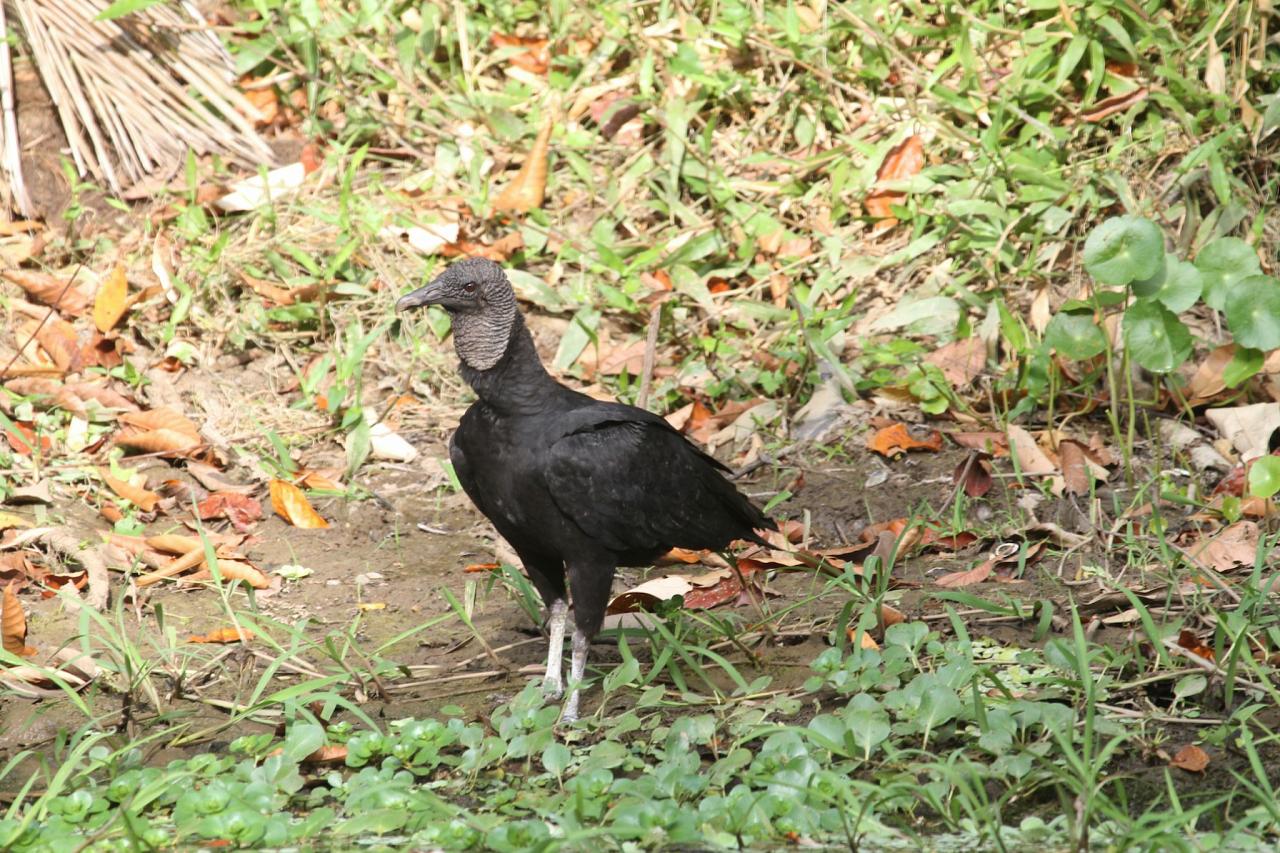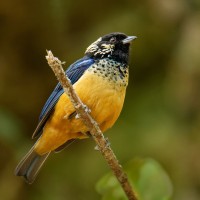- Overview
- Full Itinerary
- Photo Gallery
- Costing
- Travel Details
- Trip Reports
- Guide
- Map
- Know Before You Go
- Other Trips You May Like
This Panama wildlife tour offers both great birding and the chance to observe fascinating Neotropical mammals such as Two-toed and Three-toed Sloths, Manatee, neotropical monkeys like Geoffroy’s Tamarin and Howler Monkey, Armadillo, night mammals, and more.
There are parts of the world, like Africa, where we are dazzled by the abundance of large mammals—elephants, giraffes, and lions are out in the open and easy to see. Mammal watching in Central and South America, however, can be a little more challenging. Many mammals here are found in lush forests and are small to medium-sized; many are predominantly nocturnal. Local expertise with our Canopy Family partners really helps!
In Panama, we find that it’s very easy to combine the two interests, at a pace set to observe, not just tick off species and run. We strive to find diurnal mammals like monkeys, agoutis, coatis, and tamanduas during the day; at night, we venture out with our spotlight to search for nocturnal mammals, like Kinkajou and various opossums and bats. A good list of night birds are a bonus of our efforts.
The forests of Central Panama are full of mammals, and although it may take a little searching, finding neotropical mammals is memorable and rewarding! We also take advantage of the forests around us to find birds, frogs, reptiles, and insects—there won’t be a dull moment!




Tour Highlights
- Enjoy four nights at the Canopy Tower, a converted radar tower, completely surrounded by wildlife
- Walk Semaphore Hill Road in Soberanía National Park looking for sloths, tamanduas, and coatis, as well as trogons, motmots, and antbirds
- Take the Birdmobile to Pipeline Road, looking for wild cats like Jaguarundi, and great birds
- Embark on night drives looking for Common Opossum, sloths, Peccary, and birds like Spectacled Owl
- Explore by boat; look for Lesser Capybara and West Indian Manatee on Gatun Lake
- Spend an afternoon at the Panama Canal, learning history and watching massive cargo ships go through the locks
- End your stay with four nights at the Canopy Lodge, with cool mountain air and fabulous birds on feeders and trails


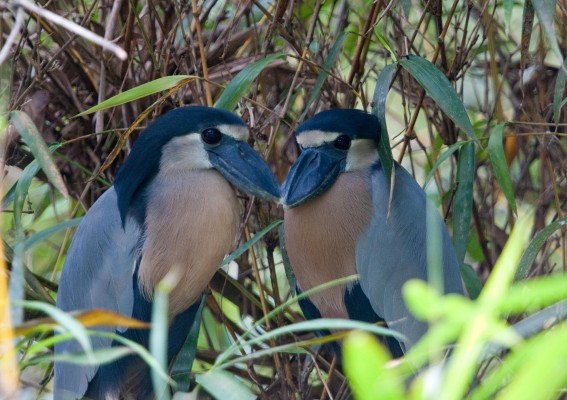

Trip Itinerary
Itineraries are guidelines; variations in itinerary may occur to account for weather, road conditions, closures, etc. and to maximize your experience.
Fri., Feb. 20 Arrival in Panama City | Canopy Lodge
Welcome to Panama! Please arrive no later than NOON, as it’s about a three hour drive to get to Canopy Lodge; please plan to eat lunch on your own before assembling as a group in baggage claim.
Canopy Lodge is nestled in El Valle de Anton in the foothills of Central Panama. El Valle is located in the caldera of a gigantic volcano that erupted 3.5-million years ago. It is the largest inhabited caldera in the western hemisphere. The volcano has been dormant for many, many years, but there are mud baths and thermal pools in certain areas of the caldera. Both the Canopy Lodge and the town where it is located are just delightful. When we arrive at the lodge, it is usually hard to get to your room since visitors are hypnotized by the several colorful tanagers visiting the feeders—not to mention the very pleasant temperature. The altitude here is about 2300 feet above sea level.
We settle in to our rooms, enjoy the bird feeders and perhaps a leisurely walk on some close trails near the lodge. We assemble in time for happy hour and dinner and a brief orientation about the week to come.
The Canopy Lodge is a great place to see some of our first mammals of the trip and to get some other foothill specialties. After dinner we hope to take a leisurely night walk around the lodge grounds. Some of the nocturnal mammals often seen in this area are Gray Four-eyed, Common, and Water Opossums, and Rothschild’s Porcupine.
Accommodations at Canopy Lodge (D)
Sat., Feb. 21 Canopy Lodge Gardens & Canopy Adventure Trails
This morning we enjoy breakfast and feeders that host a flurry of activity—Collared Aracari, Thick-billed Euphonia, and Dusky-faced and Flame-rumped Tanagers feast on the bananas provided. Then, we head out to explore the trails. We plan to spend the entire day on the lodge’s property, taking our time, getting to know the local species, and settling in.
After having lunch we make a point to take the trails to visit Chorro El Macho at the Canopy Adventure, a 120-foot high waterfall; the adventureous among us may want to try out the zipline! As we walk, it’s stunning to take in the cloudforest trees drapped with lush mosses, ferns, orchids and other climbing plants. It’s possible to see sloths and tamarins if we keep our eyes keen. Huge morpho butterflies and other flit past, and Robert can help us identify them.
We come back to the Canopy Lodge and perhaps take a rest or a swim in the lodge’s natural pool, then it’s time for dinner before going over our species list for the day. For those who want, we can enjoy a night wander on trails close to the lodge looking for more mammals including Western Night Monkey, Ocelot, and Orange Nectar Bats—they come to the hummingbird feeders at night!
Accommodations at Canopy Lodge (B,L,D)
Sun., Feb. 22 La Mesa | Cara Iguana
After being awakened by the morning chorus of birds and having breakfast, we go out again in search of any other animal that is still missing on our list. This time we visit two places, the first one is La Mesa, the flatlands up along the rim of the crater, within the protected area of Cerro Gaital Natural Monument. Look for Western Pygmy Squirrel, Greater Grison, Rufous Tree Rat, Rothschild’s Porcupine, Tayra, and Jaguarundi.
After lunch and a siesta, we head to Cara Iguana, a quiet road on the outskirts of El Valle. This area boasts quality dry forest at the roadsides. Here we hope to see any mammals we have not yet encountered—perhaps White-tailed Deer or Jaguarundi, along with the likelihood of Two-toed and Three-toed Sloths and Central American Agouti. We also check for roosting Spectacled Owl on a private property. Lance-tailed Manakin, Tody Motmot, and White-winged Becard are possibilities here!
Accommodations at the Canopy Lodge (B,L,D)
Mon., Feb. 23 Full Day at Altos del Maria
Departing after an early breakfast, we’re off into the highlands of Altos del Maria! With the sunrise ahead of us, we climb into the mountains along the Continental Divide east of El Valle. Often engulfed by the mist of the expansive cloud forest that surrounds the area, Altos del Maria sits at an altitude of 1,100 meters (3,600 feet). On today’s jungle tour, you can find highland forest birds, including Black-crowned Antpitta, Streak-chested Antpitta, Black-headed Saltator, White Hawk, Barred Forest-Falcon, Red-faced Spinetail, Spotted Barbtail, Tufted and Sulphur-rumped Flycatchers, Rufous-browed Tyrannulet, Orange-bellied Trogon, Ochraceous Wren, White-breasted Wood-Wren, White-ruffed Manakin, Yellow-eared Toucanet, Yellow-billed Cacique, Black-and-yellow Tanager, White-vented Euphonia, and exquisite hummingbirds including Band-tailed Barbthroat, White-tailed Emerald, Purple-throated Mountain-Gem, White-tipped Sicklebill, Bronze-tailed Plumeleteer, and the tiny yet stunning Snowcap. We hope to see a tiny Western Pygmy Squirrel working away in the treetops. After a picnic lunch in the field, we drop down into a valley and climb to the ridge on the opposite side. Reaching some large swaths of mature humid forest along this ridge, we explore some trails and roadside spots in search of even more forest birds and animals. We return to the Canopy Lodge by mid-afternoon.
Accommodations at Canopy Lodge (B,L,D)
Tues., Feb. 24 Transfer to Canopy Tower | Observation Deck | Semaphore Hill Road
After breakfast, we say good bye to Canopy Lodge, and head out to Canopy Tower. We arrive at Canopy Tower in time for lunch and to get aquainted with the observation deck. Scan the treetops, where we often see Geoffroy’s Tamarin, Mantled Howler, Two- and Three-toed Sloths munching on cecropia leaves, Red-tailed Squirrel, and a variety of colorful birds that come to feed on the Cecropia trees. Keel-billed Toucan, a colorful variety of tanagers, majestic raptors, and even Blue Cotinga can be seen from the observation deck.
This afternoon we walk down Semaphore Hill Road through the lush lowland rainforest of Soberanía National Park to continue our search for mammals and other creatures. On this road there is a chance to find Brown-throated Three-toed Sloth and Hoffmann’s Two-toed Sloth, as well as a Northern Tamandua and White-nosed Coati. This paved road is a little more than a mile long, and passes through some of the most beautiful forest around! Here we also have the chance to see many birds and interesting plants, wildflowers, and butterflies. Two more rare species, Silky Anteater and the secretive Tayra, have been spotted occasionally along this road. We also have a great chance for understory birds including Slaty-tailed and Gartered Trogons, Rufous and Broad-billed Motmots, and several species of antbirds. At the end of this walk, we are picked up by one of the open-air birdmobiles and driven up to dinner.
Accommodations at the Canopy Tower (B,L,D)
Wed., Feb. 25 Metro Park | Summit Gardens | Night Drive
This morning we head back toward the city to visit The Metropolitan Natural Park. The park hosts forests that are much drier than those around the Tower and Lodge. There is a wonderful over-look at the summit of a hill, which gives us an incredible perspective of Panama City, the scenic bay, and some of the closer islands. Some of the most common residents are Geoffroy’s Tamarin and Variegated and Red-tailed Squirrels. Northern Tamandua, White-nosed Coati, and Panamanian Night Monkey are also a possibility for us too. Rosy Thrush-Tanager, Black-throated Trogon, Green Shrike-Vireo, and the endemic Yellow-green Tyrannulet can also be found here!
After lunch, we head up to the Summit Botanical Garden, just 10 minutes from the Tower. Our main goal here is to find a roosting colony of Common Tent-making Bats under the large palm leaves at the entrance to the park. Other mammals are always a possibility. Great Black Hawk, Crane Hawk, Giant Cowbird, Yellow-backed Oriole, and Masked Tityra also may be seen!
After dinner we board the Canopy Tower’s open back Rainfomobile for a night drive down Semaphore Hill Road. Many neotropical mammals are nocturnal, and night drives are the best way to find them! We hope this evening to find Panamanian Night Monkey, Paca, Central American Woolly Opossum, and if lucky, a Rothschild’s Porcupine!
Accommodations at the Canopy Tower (B,L,D)
Thurs., Feb. 26 Pipeline Road | Ammo Dump Pond & Gamboa Marina
This morning after an early breakfast, we board the Canopy Tower’s Birdmobile for a 25-minute ride to spend the morning at the world famous Pipeline Road. Hundreds of species of birds, mammals, and countless insects and plants have been recorded here. This 10.5-mile gravel road with eleven creeks has much to be explored, and is a great place for mammals, including White-faced Capuchin, Mantled Howler, Central American Agouti, White-nosed Coati, Tayra, and Collared Peccary. We keep an eye on the openings of tree cavities for Rufous Tree Rat. There have also been sightings of three species of cats, namely Jaguarundi, Ocelot and even, rarely, Jaguar. Over 500 species of birds have been recorded here, so there are good chances we enjoy quality sightings of Crimson-crested Woodpecker, White-tailed Trogon, Spotted Antbird, and if lucky, Tiny Hawk! We return to the Tower for lunch.
After lunch and a siesta, we drive north to Ammo Dump Pond, located in the small town of Gamboa. This is a great place to look for the world’s second largest rodent, the Lesser Capybara, which can be found in or near the Chagres River. Also, in Gamboa's forested neighborhoods, we hunt for Red Squirrel and Central American Agouti, a large diurnal rainforest rodent. Depending on time, we make a quick stop at the marina on the Chagres River, the main source of water for the Panama Canal. With a bit of luck, we can find a Neotropical River Otter and Variegated Squirrel. Water birds including Wattled Jacana, Striated Heron, and the beautiful Snail Kite can be seen hunting here.
Accommodations at the Canopy Tower (B,L,D)
Fri., Feb. 27 Jungle Boat Tour | Pipeline Road or Guide’s Choice
This morning after breakfast we board a motorboat for a spectacular tour on the Panama Canal. Most of the Panama Canal is actually an artificial lake, Gatun Lake, and this boat trip departs from Gamboa, just 15 minutes from the Canopy Tower. We start in the Chagres River, enjoying the abundance of water birds, and keep an eye out for Lesser Capybara. Then we pass under the historic one-way Gamboa bridge into the Panama Canal! Along the way we pass huge cargo ships and ocean liners and also visit hidden coves and beautiful inlets of Gatun Lake with fascinating fauna and flora.
From the boat, we explore the small islands throughout the lake to look for primates, including Mantled Howler, White-faced Capuchin, and the tiny Geoffroy’s Tamarin. There is also a chance to see some interesting reptiles, including American Crocodile (some reach 14+ feet in length) and its smaller relative, the Spectacled Caiman, Basilisk Lizard (Jesus Lizard), and Black River Turtle. A little scarcer, but not impossible, is the Neotropical River Otter and, if we are really lucky, a West Indian Manatee. This species was introduced to the Panama Canal in the 1960s to control the growth of water weeds, and they have adjusted very well to this habitat. We also hope to see the tiny Proboscis Bat; they roost along these quiet banks. We are sure to have a fantastic morning!
After lunch at the Tower, we may head back out to do some afternoon birding and mammal watching on the Pipeline Road, or our guides may suggest another option depending on the species we have and have not seen.
Dinner tonight is again at Canopy Tower, and we celebrate our week with a last species list review and a recount of our favorite moments of the trip.
Accommodations at Canopy Tower (B,L,D)
Sat., Feb. 28 Departures
After a leisurely breakfast watching the feeders and perhaps a final stroll around the Tower, we depart for Panama City to catch our return flights home, with memories of the many species of mammals, birds, insects, and other wonders of the Neotropics seen and photographed here in Panama. We highly recommend an afternoon flight; it only takes about an hour to get back to the airport but you need to be there about three hours ahead of your flight. While an early transfer can be arranged for you (additional cost), it is not the best way to end your wonderful holiday! (B)
Cost of the Journey
The cost of this journey is $5490 DBL / $5490 SGL* per person, from Panama City. Only three singles are available. Tour cost includes all accommodations; meals as specified in the itinerary, group airport transfers, professional guide services, local park and other area entrance fees, and miscellaneous program expenses.
NEW! all tips other than your NJ guide (optional) and local guide are included (this includes tips for your driver, lodge and staff, day activities, meals and other services).
*Limited to 3 single rooms with no single supplement. If you are a single but would like a double room or we have sold the 3 single rooms, the cost is an additional $159/night ($1272).
The cost is based on a minimum number of 6 participants. A limited number of upgrades to suite accommodations are also available. Cost does not include transportation to or from your home to Panama, or items of a personal nature like laundry, telephone charges, or drinks from the bar. If you wish to include a transit of the Panama Canal, please ask us for help in recommending arrangements. If you wish to add days on to your trip to make this work, we are happy to make suggestions for activities and lodgings. As of last year, there were cruises on a few different days of the week, please inquire.
Travel Details
Please plan to make air travel plans only after the minimum group size has been met. We will send you a confirmation email as soon as the trip has been confirmed.
Arrival Airport: Tocumen International Airport (PTY) Panama City, Panama
Arrive Time: Plan your flights to arrive February 20, 2026 before noon
Departure Airport: Tocumen International Airport (PTY)
Departure Time: Plan your flights to leave February 28, 2026 after 1:00 PM
Travel Tip: If you are coming in early to see some of the city, we recommend you book at the Radisson Panama Canal Hotel, located on the Amador Causeway with a lovely walking trail and the Smithsonian BioMuseo. You have a view of the Bridge of the Americas and ships coming into the Canal. You may prefer to stay in historic and trendy Casco Viejo with its great shops, museums, and view. Both require a taxi from the airport but these are reliable and readily available. You will probably then need to return to the airport or one of the airport hotels to meet up with the group but closer to departure we can check to see if anyone can pick you up.
Entry Requirements: See "Essential Information" section under the "Know Before You Go" tab.
Browse below for trip reports and species lists from past versions of this and other tours from this destination.
Panama
- February 2011
- March 2012
- January 2013
- February 2015
- January 2018
- January 2019
- January 2020
- January 2020
- October 2021
Birds & Mammals
- February 2019
- February 2020
- April 2022
- March 2023
- March 2024
- March 2025
Darién
- February 2016
- March 2017
- July 2019
- July 2022
- July 2023
Green Season
- July 2012
- August 2014
- July 2019
- July 2024 (Three Lodge Tour)
Intro to Biodiversity
- October 2019
- October 2021
- September 2023
- September 2024
Tranquilo Bay
- January 2022
- April 2022
- October 2022
- January 2023
- March 2023
- April 2023
- October 2023
- January 2024
- February 2024
- March 2024
- April 2024
- October 2024
- November 2024
- January 2025
- February 2025
- March 2025
-
Robert Gallardo
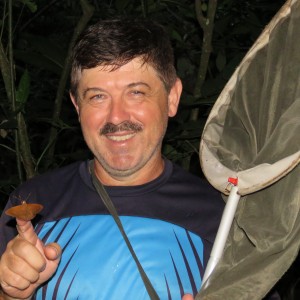
A California native who moved to Honduras in 1993 for the Peace Corps, Robert stayed to make a life there, diving headfirst into the world of tropical birds. He is now considered the country's leading authority on both avifauna and butterflies – a double expert on beautiful flying things. He leads tours for Naturalist Journeys to Panama, Honduras, Texas and Trinidad & Tobago. Robert is the current President of the Pro Nature Honduras Foundation, a small non-profit which promotes nature-based sustainable tourism and environmental education. He is also the co-founder of the Honduran Ornithological Society. He has authored two editions of the "Guide to the Birds of Honduras." He and his partner Olivia hope to publish the "Guide to the Butterflies of Honduras" sometime in 2022. The couple lives in Emerald Valley where they protect 50 acres of rich mid-elevation rainforest and are working to install a nature center with their foundation.
Other trips with Robert Gallardo
-
 Birds & Mammals of Ecuador's Andes FULL - See our March departure!November 17 - 30, 2025
Birds & Mammals of Ecuador's Andes FULL - See our March departure!November 17 - 30, 2025 -
 Birding from Bogota A Short & Sweet Colombia TourDecember 6 - 12, 2025, w/Chingaza National Park extension
Birding from Bogota A Short & Sweet Colombia TourDecember 6 - 12, 2025, w/Chingaza National Park extension -
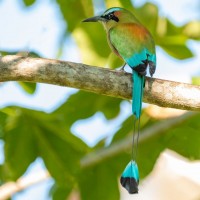 Honduras’ Emerald Valley A Short & Sweet Birding BlitzFebruary 10 - 16, 2026
Honduras’ Emerald Valley A Short & Sweet Birding BlitzFebruary 10 - 16, 2026 -
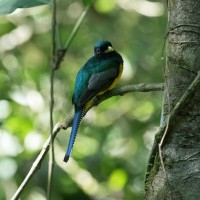 Belize: Three Great LodgesMarch 14 - 24, 2026
Belize: Three Great LodgesMarch 14 - 24, 2026 -
 Honduras’ Emerald Valley A Short & Sweet Birding BlitzMay 1 - 7, 2026
Honduras’ Emerald Valley A Short & Sweet Birding BlitzMay 1 - 7, 2026 -
 Grand Uganda July 7 - 24, 2026
Grand Uganda July 7 - 24, 2026 -
 Honduras’ Emerald Valley A Short & Sweet Birding BlitzDecember 1 - 7, 2026
Honduras’ Emerald Valley A Short & Sweet Birding BlitzDecember 1 - 7, 2026
-
Essential Information +
Pace & Protocols +
Packing List +
Suggested Reading List +
Useful Links +
Photo credits: Banners: Black Howler Monkey by Peg Abbott; Yellow-throated Toucan by Greg Smith; Ocelot by Xavier Muñoz; Birding at Canopy Tower by Pat Lueders; Juvenile Harpy Eagle by Pat Lueders; Capped Heron by Peg Abbott; Geoffroy's Tamarin by Howard Topoff; Barred Antshrike, Naturalist Journeys Stock; Orange-collared Manakin by Bud Ferguson; Three-toes Sloth by Peg Abbott; Coati, Naturalist Journeys Stock; Boat-billed Herons by Tom Dove; Golden-hooded Tanager by Peg Abbott; Collared Aracari, James Adams; Broad-billed Motmot, Carla Bregman; Crimson-crested Woodpecker, Tom Dove; Night Monkeys, Carla Bregman; Yellow-throated Toucan, Greg Smith; Tayra, Mukesh Ramdass; Tamandua, Howard Topoff; Panama Canal, Naturalist Journeys Stock; Three-toed Sloth, Naturalist Journeys Stock; Snail Kite, Peg Abbott; View from Canopy Tower, Carol Simon; Black-breasted Puffbird, Naturalist Journeys Stock; Green Thorntail, Willy Alfaro; Chestnut-headed Oropendola, Naturalist Journeys Stock; Feeders at Canopy Lodge, Naturalist Journeys Stock; Altos del Maria scenics, Robert Gallardo; Bicolored Antbird, James P. Smith; Black Vulture, Peg Abbott; Black-breasted Puffbird, Peg Abbott; Blue-gray Tanager, Peg Abbott; Fasciated Antshrike, Peg Abbott; Great Jacamar, James P. Smith; Green Kingfisher, Tom Dove.







